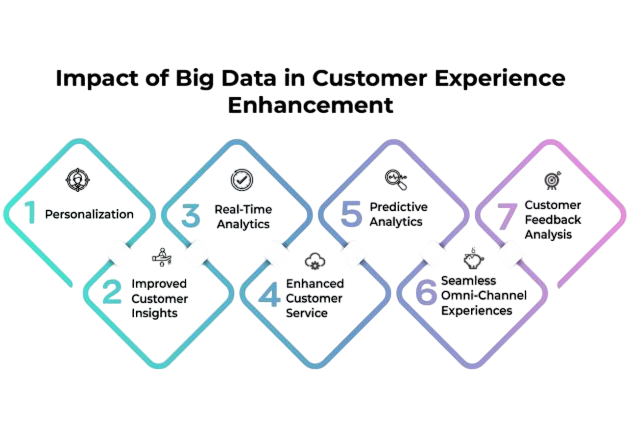
- Introduction
- Understanding Disruptive Innovation
- How Big Data Fuels Disruption
- Real-Time Decision Making and Agility
- Big Data in Startup Ecosystems
- Industry Examples of Big Data–Driven Disruption
- Big Data and Consumer-Centric Innovation
- Risks and Challenges in Big Data–Led Disruption
- Future Trends: AI, IoT, and the Next Wave
- Conclusion
Introduction
We live in a world where entire industries can be transformed overnight. Companies that once ruled their sectors now struggle to keep up with nimble startups and data-driven innovators. The common thread tying together these revolutionary changes is the effective use of Big Data. With its ability to uncover hidden patterns, predict behavior, and drive personalized engagement, Big Data has become the backbone of disruptive innovation. To turn this potential into measurable impact, enrolling in Data Science Training is a strategic move empowering professionals to translate raw data into actionable insights and lead innovation across industries. In today’s digital economy, innovation is no longer just about product development, it’s about insight-driven evolution, and Big Data enables organizations to evolve at the speed of information. From autonomous vehicles to personalized medicine, Big Data isn’t just supporting innovation, it’s defining it.
Understanding Disruptive Innovation
The term disruptive innovation, coined by Harvard professor Clayton Christensen, refers to innovations that create new markets or fundamentally alter existing ones by offering more accessible, affordable, or efficient alternatives. Disruptive innovators often start small targeting underserved or niche markets and eventually displace established players. While traditional innovation refines and optimizes, disruptive innovation reimagines the value proposition altogether. To understand the mechanics behind such scalable disruption, exploring What Is MapReduce is essential revealing how parallel processing frameworks empower organizations to handle massive datasets and rethink operational efficiency from the ground up. Think of how Uber redefined transportation or how Netflix upended the traditional television and movie industry. At the heart of these disruptions lies powerful data.
Interested in Obtaining Your Data Science Certificate? View The Data Science Online Training Offered By ACTE Right Now!
How Big Data Fuels Disruption
Big Data is the fuel that powers disruptive innovation. It transforms vague business intuition into data-backed strategies, accelerates experimentation, and reduces the cost of failure. By analyzing vast amounts of structured and unstructured data, companies can gain a deep understanding of customer behavior, market dynamics, and operational inefficiencies. To harness this potential effectively, exploring What is Big Data Analytics is essential offering the frameworks and tools needed to convert raw data into strategic advantage.
Big Data enables disruptive innovation in several key ways:
- Anticipating market shifts before they become obvious.
- Identifying gaps in customer satisfaction or product offerings.
- Testing new ideas rapidly through A/B testing and real-time analytics.
- Democratizing decision-making by providing data visibility across departments.
With the ability to process data in real time using platforms like Apache Spark, Hadoop, and cloud-based solutions, innovators today are more agile and better informed than ever before.
To Explore Data Science in Depth, Check Out Our Comprehensive Data Science Online Training To Gain Insights From Our Experts!
Real-Time Decision Making and Agility
In the era of disruption, speed is critical. Big Data empowers businesses to make real-time decisions, responding to changes in user behavior, market trends, or operational constraints immediately. This agility enables businesses to pivot faster, personalize experiences instantly, and launch innovations before competitors can react. To understand the infrastructure that powers such responsiveness, exploring What is Apache Hadoop YARN is essential revealing how resource management and job scheduling frameworks enable scalable, real-time data processing across dynamic enterprise environments. For instance, e-commerce companies use real-time data to adjust pricing dynamically, offer tailored recommendations, or manage inventory fluctuations.
Big Data in Startup Ecosystems
Startup ecosystems thrive on speed, innovation, and bold decisions traits that align perfectly with Big Data. Unlike legacy enterprises bound by silos and outdated IT infrastructure, startups are more agile in adopting cloud-native, data-driven architectures from day one. Many successful startups like Airbnb, Stripe, and Robinhood used Big Data not just as a support function but as a core business strategy. To follow their lead and build data-first organizations, enrolling in Data Science Training is a strategic move empowering professionals to turn raw data into competitive advantage through predictive analytics, personalization, and intelligent automation. These companies leverage user data to improve UX, optimize marketing campaigns, and refine product features. Moreover, startups often use data to identify underserved markets and design products that address specific gaps, allowing them to disrupt established business models. By embracing Big Data from inception, startups can operate leaner, smarter, and faster disrupting industries before incumbents can catch up.
Gain Your Master’s Certification in Data Science Training by Enrolling in Our Data Science Master Program Training Course Now!
Industry Examples of Big Data–Driven Disruption
- Healthcare: Big Data is revolutionizing how diseases are diagnosed, treatments are designed, and patient outcomes are predicted. Startups are using machine learning on medical data to detect diseases like cancer at earlier stages, leading to more effective interventions.
- Retail: Traditional retail has been disrupted by e-commerce platforms that harness Big Data for personalized shopping experiences. Amazon, for instance, uses massive amounts of user data to power its recommendation engine, inventory planning, and delivery optimization.
- Transportation: Ride-sharing services like Uber and Lyft have turned the transportation model on its head, thanks to real-time data on rider location, traffic, and demand-supply gaps.
- Media & Entertainment: Streaming platforms such as Netflix and Spotify have used Big Data to replace scheduled programming with personalized, on-demand experiences completely disrupting the way content is consumed and monetized.
- Agriculture: Precision farming techniques, driven by sensor data, weather patterns, and satellite imagery, are changing how crops are cultivated, harvested, and distributed making agriculture more data-dependent than ever before.

These examples show how Big Data goes beyond incremental change and becomes a vehicle for industry-wide reinvention.
Are You Preparing for Data Science Jobs? Check Out ACTE’s Data Science Interview Questions and Answers to Boost Your Preparation!
Big Data and Consumer-Centric Innovation
- In the age of the empowered consumer, businesses can no longer afford to guess what users want. Big Data offers deep, granular insights into consumer preferences, browsing behavior, purchasing trends, and social sentiment. By aligning product development and marketing with data-backed consumer-centric insights, organizations can innovate more precisely.
- Whether it’s launching a new feature, testing a pricing model, or customizing content, Big Data ensures that innovations are rooted in real needs, not assumptions. This level of precision leads to higher engagement, stronger brand loyalty, and faster adoption traits that define successful disruption.

Risks and Challenges in Big Data–Led Disruption
Despite its power, Big Data is not without risks. Data quality, privacy concerns, and biased algorithms can undermine innovation. Poorly managed data can lead to faulty conclusions and misdirected strategies. Additionally, over-reliance on data can stifle creativity or prevent out-of-the-box thinking. Companies must also navigate strict regulatory landscapes, especially with laws like GDPR and CCPA shaping how data can be collected and used. To balance innovation with compliance, understanding Who Is a Data Architect is essential highlighting the strategic role of designing secure, scalable, and regulation-aware data infrastructures that empower both creativity and control. Effective data governance, ethical AI practices, and cross-functional collaboration are crucial to harnessing Big Data responsibly for innovation.
Future Trends: AI, IoT, and the Next Wave
- Big Data is converging with technologies like Artificial Intelligence (AI), Internet of Things (IoT), and Blockchain to drive the next wave of disruption. As connected devices generate more data than ever, real-time analytics powered by AI will unlock new forms of autonomous decision-making and predictive intelligence.
- In industries like autonomous driving, smart cities, and personalized medicine, these combined technologies are poised to redefine not only products but entire human experiences. The synergy between Big Data and emerging tech will produce more complex, intelligent, and transformative innovations in the years ahead. To orchestrate these distributed systems reliably, understanding What is Apache Zookeeper is essential revealing how coordination services, configuration management, and fault tolerance underpin the next wave of scalable tech ecosystems.
Conclusion
Disruptive innovation is no longer a rare occurrence; it is a continuous process, and Big Data is its DNA. Organizations that master data will shape the future, while those that fail to adapt risk becoming obsolete. From startups to Fortune 500 companies, the ability to convert data into insight, and insight into action, defines who leads and who follows. To stay ahead of this curve, enrolling in Data Science Training is a strategic investment empowering professionals to build data-driven cultures, deploy intelligent systems, and lead with analytics at the core of every decision. Big Data is not just a support system; it is the strategic core of disruption. For professionals, business leaders, and technologists alike, embracing Big Data is no longer optional; it’s imperative for thriving in the innovation economy.


